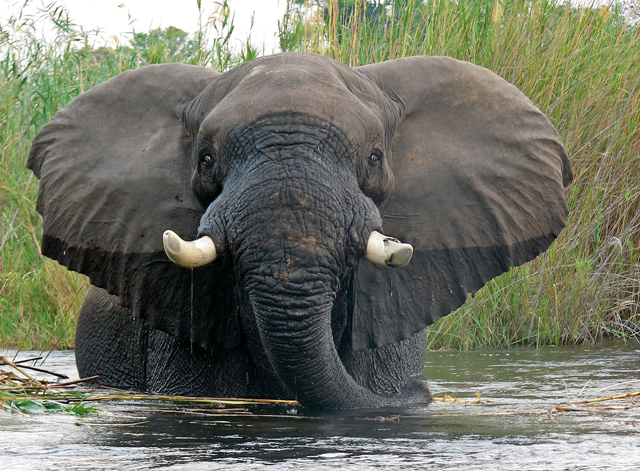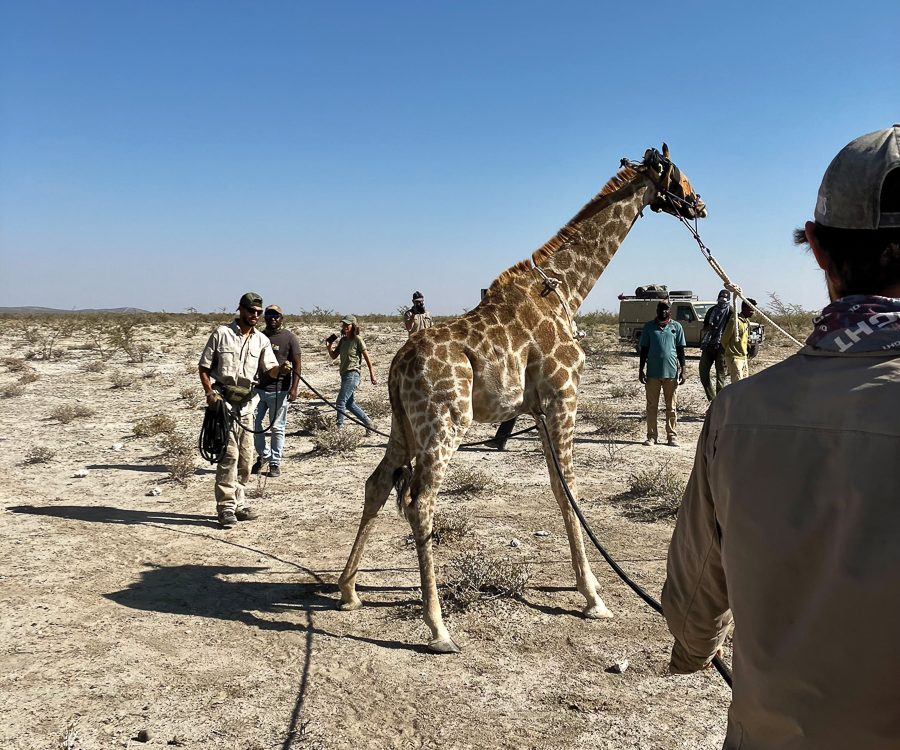Trans-boundary fisheries management – Sustainable utilisation of the Caprivi floodplain fish resource
July 15, 2012Wildlife management in Namibia – Conservation at scale – the next major frontier
July 15, 2012By Chris Weaver, Director of WWF
Today the Namibia Nature Foundation is one of the most respected and effective conservation NGOs in Namibia, managing a suite of conservation activities.
The WWF initially became involved with the NNF in 1992, when the NNF was requested by the then Ministry of Wildlife, Conservation and Tourism to manage WWF funds provided to the Ministry to support conservation activities in the West Caprivi Game Reserve and Bushmanland East. Over the years the NNF has evolved from a financial management service provider to a major conservation organisation in the field.
These two conservation organisations have faced many challenges together. In 1993, the NNF was technically bankrupt, but a large institutional support grant from the USAID-funded Living In A Finite Environment (LIFE) Project enabled the NNF to recover and develop- into a self-sustaining organisation. The grant was aimed at building a cost-recovery system into the NNF’s operations and bolstering its institutional capacity by paying for key management costs until the cost-recovery system became effective.
With these concerns in the past, the NNF is now a major conservation player in Namibia. Although it continues to provide a valuable financial management service, the NNF now also provides hands-on advice and support to rural communities in different regions of the country by providing technical support in Community Based Resource Management (CBNRM), most notably in the Caprivi and Kavango regions.
The KaZa TFCA
The Caprivi and Kavango regions border Angola, Zambia and Botswana, three of the five members of KaZa, the developing Kavango-Zambezi Transfrontier Conservation Area. With Zimbabwe and Namibia, the five KaZa members will integrate wildlife management and tourism development. KaZa should also harmonise trans-boundary fishery policy and management practices.
The NNF is working with local fishermen, traditional authorities, conservancies and the Ministry of Fisheries and Marine Resources to introduce effective trans-boundary fishery management systems with counterpart stakeholders in Zambia and Botswana for equitable sharing of the Zambezi River system. This cutting-edge approach entails the establishment of community fish sanctuaries and negotiations at village level across national borders.
In the Caprivi Region, the NNF is working with the farming community, communal conservancies and the Ministry of Agriculture, Water and Forestry to introduce Conservation Agriculture. This minimal tillage approach to crop production is reducing deforestation, increasing crop production on smaller but more fertile plots, and assisting with the maintenance of wooded tracts of land that are conducive to wildlife movement.
In the Kavango Region, the NNF has long been an influential Namibian and regional catalyst to river-basin management. The Every River Has its People Project earned a solid reputation for engaging local communities in river-basin management, through the introduction of conservancies, land-use planning and zonation, together with the diversification of livelihoods, including craft production.
The NNF’s support to Kavango conservancies has gradually expanded to the promotion of the Khaudum Conservancy Complex, creating a synergy between the park and communities, safeguarding the Khaudum National Park and improving livelihoods of residents of neighbouring conservancies where wildlife moves freely.
Coordination conservation efforts
At national level, the NNF provides many valuable conservation services. It plays a strong role in coordinating the NACSO Natural Resources Working Group.
This technical group is composed of members from NGOs around the country and the Ministry of Environment and Tourism. This synergetic group assists conservancies to map their boundaries, design and implement management plans, manage and monitor natural resources, set game-hunting quotas, and implement game translocation.
The NNF’s contribution to natural resource management has strengthened the Namibia CBNRM Programme, with many of the practices developed now being replicated elsewhere in the world.
Namibia’s lands sector has also benefited from advice and support to the Ministry of Lands and Resettlement in the creation of innovative land–management policies for communal areas, and the NNF’s work with the Kavango’s regional stakeholders in the creation of land-use plans.
More recently, the NNF started playing a stronger role in combating climate change.
Most predictions are that Namibia will become even drier. It is therefore crucial for stakeholders to understand the potential negative consequences of climate change and how these impacts can be mitigated through adaptive management practices.
As a key player in the CBNRM sector, the NNF is well poised to share its experiences with the management of water, land, wildlife, fish, and livelihood diversification to assist stakeholders across the country to prepare for and counter the consequences of impending climate change.
The NNF’s evolution into a key player in natural-resource management has been built on a strong foundation: the organisational strength of the NNF in providing sound financial management services for partners.
The emergence of the NNF from its own financial problems in the early 1990s to its prominent national role in conservation and development over the past 20 years has been both remarkable and pleasurable to follow. This is a tribute to its staff, its board, and its directors over time, who have all worked together to create one of the most successful and highly respected conservation NGOs in Southern Africa.
This article appeared in the 2012 edition of Conservation and the Environment in Namibia.





